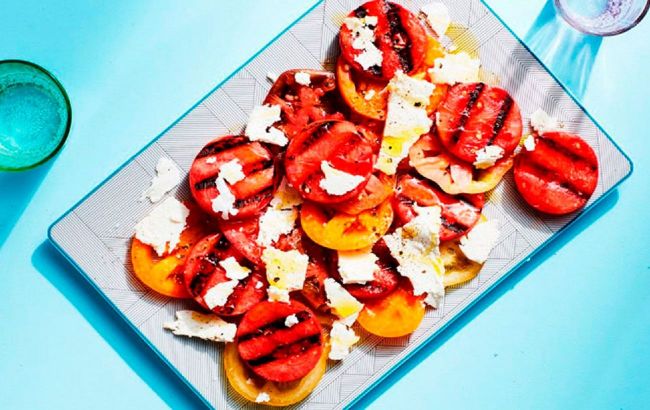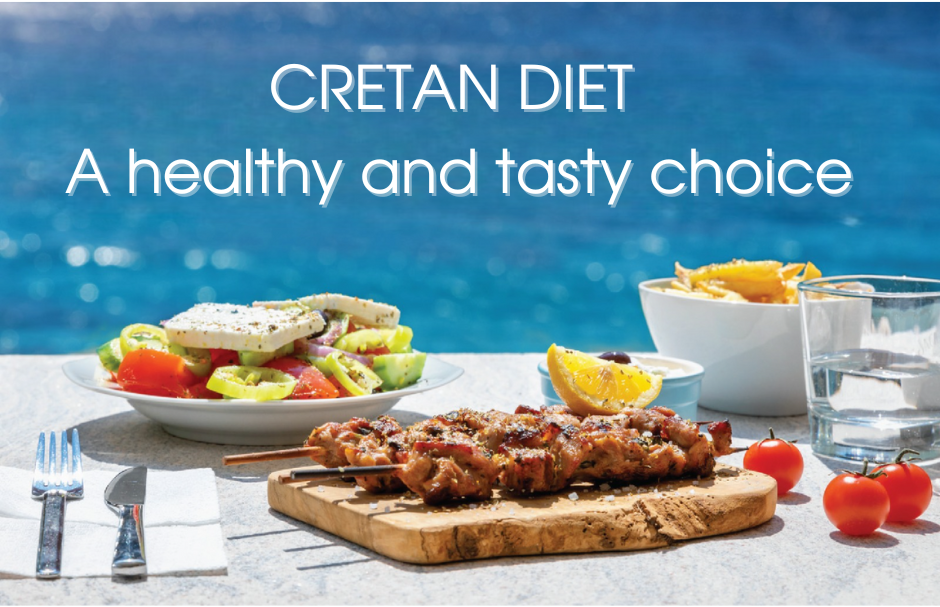Cretan diet: what it is and its benefits
 Photo: What to eat on the Cretan diet (fitomarket.com.ua)
Photo: What to eat on the Cretan diet (fitomarket.com.ua)
The Cretan diet first gained worldwide popularity in the mid-20th century when American researchers visited the island to study the reasons for the low rates of cardiovascular disease, cancer, diabetes, and the longevity of the local residents, many of whom lived to 100 years old. Their excellent health was linked to the local lifestyle and diet, which formed the basis of the Mediterranean diet, considered the healthiest in the world.
Ukrainian dietitian Oleh Shvets on Facebook, explains what this eating style entails and its benefits.
What is the Cretan diet?
The Cretan diet is characterized by its simplicity, emphasizing plant-based foods and seasonal products.
Wild Greens
Horta, edible greens, have always played a significant role in Cretan cuisine. Regardless of their bitterness or sweetness, Cretans use them in various ways: raw in salads, as fillings for pies, or cooked with legumes. Greens are a key ingredient in Cretan vegetarian dishes.
Stamnagathi, or wild chicory, is a superfood of the island with high antioxidant content, promoting heart and liver health. Locals even use stamnagathi decoction to cleanse the body of alcohol metabolites and aid digestion.
Olive oil
Crete is home to a vast olive grove with 30 million olive trees, some over 3000 years old. The main variety, Koroneiki, is used to produce oil considered the best in the world. It is used for cooking and even frying or baking desserts. Cretans are also renowned for their record consumption of olive oil - 21 liters per person annually.
Thyme honey
Since Minoan times, bees have held special significance in Crete, as evidenced by a golden pendant depicting bees found in an ancient necropolis. Thyme honey is used as a sweet filling for desserts and possesses antimicrobial properties that aid sore throats, often mixed with mountain herbal tea or local raki.

Diverse Herbs
Crete boasts a rich ecosystem with endemic herbs playing a significant role in its cuisine. Popular herbal teas include Malotira, a mountain tea, and Cretan dittany. Marjoram, thyme, oregano, fennel, and rosemary are used as spices to enhance flavor, aroma, and strengthen the immune system.
Sheep's Milk Products
Due to its mountainous terrain, large horned cattle are rare on the island, making it ideal for raising sheep and goats. Graviera cheese, made from sheep and goat milk, is often paired with thyme honey. Mizithra (anfotiros) and xinomyzithra are creamy soft cheeses used in Cretan desserts like kalitsouni. Skimmed cream Staka is blended with flour to enrich the flavor and texture of simple dishes like potatoes, eggs, or risotto, and is also used to make Stakovoutiro cream butter.
Meat
Crete favors lamb and goat meat, raised in free-range environments. Dishes also feature wild rabbit or domestic rabbit, such as ragout.
Bread
Characteristic of Crete is "paximadia" bread, double-baked from barley, ideal for making Greek salad, soaked in olive oil and tomato juice. There's also eftazymo bread, made from chickpea sourdough, and rusks from local carob trees with a nutty-chocolate flavor, currently popular.
Alcohol
The island boasts 15 local grape varieties, with its winemaking industry significantly developed in a short period. Local varieties have become Crete's competitive advantage globally, revived from near extinction, showcasing their true potential. Flagship wines include Vidiano grape variety wine, paving the way for international recognition. Among other revived rare ancient varieties are Dafni and Plyto.
A strong local alcoholic beverage made from grape spirit is known as raki or tsikoudia. It's distilled from fermented pomace in large copper stills. In autumn, large banquets, Rakokazana, are held near the stills to celebrate the new "harvest."
Another popular drink, rakomelo, is made by mixing hot raki with honey and sweet spices. It tastes like honeyed mulled wine. Locals believe that rakomelo helps treat colds, flu, coughs, and sore throats during the cold season.
Previously, we reported on 7 beneficial fruits and vegetables everyone should eat this summer.
This material is for informational purposes only and should not be used for medical diagnosis or self-treatment. Our goal is to provide readers with accurate information about symptoms, causes, and methods of detecting diseases. RBС-Ukraine is not responsible for any diagnoses that readers may make based on materials from the resource. We do not recommend self-treatment and advise consulting a doctor in case of any health concerns.

